Historic Buildings listed by the Tasmanian National Trust page 2
Table of Contents
Georgian and Gothic Revival Style buildings forming the Heritage of Tasmania.
Highlights:
- Where did the Duke of York and Princess Elizabeth stay when visiting Tasmania?
- Which Tasmanian Town is the centre of fine wool and beef cattle production?
- Where did a penal colony start as a timber getting port?
- Which entire town is a National Trust classified Georgian village?
- Which tiny village is notable for only one thing?
- Which convict-built town is famously enclosed by hawthorn hedges?
- Where is the Hobart house which WON a National Trust award?
- Which house became the birthplace of the National Trust in Tasmania?
- Where is the suburb which is Hobart's oldest suburb?
- Which Hobart house has been in the same family for 170 years?
On this page:
 |  |  |
| Ross Bridge | The Grange (1847) | Longford House |
 |  |  |
| Callington Mill | Oakington | Quamby House |
On the previous page:
 |  |  |
| Lake House TAS | Shene Estate TAS | Redlands TAS |
These pages exist to remedy that terrible lack.
All of the 106 Properties are summarised on this page: National Trust Tasmanian Heritage Register
28 to 53 of the 106 Properties listed in 1964 by the Tasmanian National Trust
An Historic Buildings competition was held in Tasmania during the latter half of 1963 and early 1964.- The success and wide-spread interest in the competition prompted the publication of the book:
- Priceless Heritage: Historic Buildings of Tasmania by the National Trust of Australia (Tasmanian branch) Platypus Publications 1964.
- NLA Listing: Available in the National Library of Australia collection. Format: Book; 136p. : chiefly ill. ; 28cm
- More about the Book Priceless Heritage: Historic Buildings of Tasmania
The Mercury Historic Homes Competition
- This photographic competition was held in 1963 to mark the 109th anniversary of the founding of the Mercury newspaper.
- The competition was sponsored by The Mercury and organised by the National Trust of Australia (Tasmania) southern region.
- Best preserved town or country house in Tasmania
- Best preserved place of worship
- Best maintained privately owned but open to the public property (eg hotel, school, shop)
- Best maintained commercial or rural building (eg factory, warehouse, barn)
- Best preserved country house for each House of Assembly electorate
- Best maintained public building
Which Were the Winners?
- Category 1 "Best preserved town or country house in Tasmania":
Conjoined Houses 169-171 St John Street, Launceston - Category 2 "Best preserved or restored" place of worship in Tasmania:
St Andrews Presbyterian Church High Street Evandale, TAS, Australia - Category 3 "Best maintained privately owned house open to the public"
Summerhome, 2 Hopkins Street, Moonah, TAS - Category 4. Best maintained commercial or rural building
161 Davey Street, Hobart
Entries 1 - 27 are on this previous page
Van Diemen's Land
| Van Diemen's Land Company's establishment at Emu Bay, 1832 (Tasmaniana Library, SLT) |
Van Diemen's Land was the original name used by most Europeans for the island of Tasmania, now part of Australia.
- The Dutch explorer Abel Tasman was the first European to land on the shores of Tasmania in 1642.
- Landing at Blackman's Bay and later having the Dutch flag flown at North Bay, Tasman named the island Anthoonij van Diemenslandt, in honour of Anthony van Diemen, the Governor-General of the Dutch East Indies, who had sent Tasman on his voyage of discovery.
- Between 1772 and 1798 only the southeastern portion of the island was visited.
- Tasmania was not known to be an island until Matthew Flinders and George Bass circumnavigated it in the Norfolk in 1798–99.
| 1852 map of Van Diemen's Land |
There are many strange stories that emerge from the mists of olde Van Diemen’s Land, that island of suffering where convicts were dispatched by the British Empire, frequently for the term of their natural lives, where harsh discipline was meted out beneath the lash and in leg irons. - Read more
28. Ross Bridge Bridge Street, Ross, TAS, Australia
- Listed on the Register of the National Estate
- Bridge Street, over the Macquarie River, Ross, Tasmania.
 |
- "Convict gangs were set to work cutting stone, but this did not result in any bridge, as the local settlers saw it as their right to have first pickings of the convict labour to build their houses.
- "Skullduggery resumed in Ross for a couple more years and still, no bridge appeared to cross the Macquarie River.
"In the heat of frustration the Colonial Government dispatched a capable convict stonemason, Daniel Herbert, to work on the Ross Bridge, along with another convict stonemason, James Colbeck and both were offered their freedom upon its completion.
- "Working under the supervision of Captain William Turner, the disappearing bridge began to materialise at long last and was duly opened by the Governor to all traffic along the colonies main highway to the north in October 1836.
- "As if to trumpet finally building a bridge in Ross, the old wooden carriageway was blown up following the ceremony.
- "The simple fact of the matter is, the stone carvings on the Ross Bridge, one of its main claims to fame, should not exist.
- "There are 186 carved voussoirs along both sides of the three arches of the bridge, which handsomely decorates a solid example of colonial stone engineering that has served well as a bridge for nearly two centuries.
- "According to a 2006 Engineers Australia report, this is the only example of a stone bridge in the World that includes carvings along all of its arches. " Read more:
| Thomas Dodd, 'Ross Bridge', undated (ALMFA, SLT) |
Ross Bridge is an historic bridge in the town of Ross in central Tasmania, Australia, completed in July 1836. It crosses the Macquarie River.
- Probably the finest masonry bridge of its period in Australia, the Ross Bridge was built in the period 1830-36 on the orders of Governor Arthur to a design by remarkable architect John Lee Archer.
- Ross Bridge is the second oldest bridge in Tasmania and uniquely carved with 186 icons
- The unique features of the bridge are the fine carvings in high relief of animal forms, human heads and celtic icons by convict stone mason, Daniel Herbert. The bridge is the essential element of the historic town of Ross.
 |  |
 |  |
- Commissioned by Lieutenant-Governor George Arthur, the bridge was designed by architect John Lee Archer, with the convict work team including two stonemasons, James Colbeck and Daniel Herbert, the latter being credited with the intricate carvings along both sides of the bridge.[1] [2]
- The bridge was registered on the Register of the National Estate in 1978.
Colonial stone bridge. Three segmental arches spring from the splayed tops of supporting piers which project on both sides of the bridge and are shaped as cutwaters with weathered and moulded copings.
- Piers project through walls and parapet. Moulded string course and plain coursing mitred round piers.
- Fine carvings on all six faces of the arches, voussoirs and keystones.
- Stone bollards and chains to approaches.
Interactive map of Ross, click for more information
Village of Ross, Tasmania | Ross, TasmaniaRoss is a village centrally located on Tasmania's Heritage Highway linking Launceston amd Hobart. Read about Ross.
|
- Read more: The Mysterious Art of the Ross Bridge; On The Convict Trail
- More information about the Heritage Highway can be found at www.heritagehighway.com.au
- Read More: Ross Historic Town in National Estate Appendix Ross Historic Town
- Tasmanian Heritage Register Place ID #5289 - top of page
29. Mona Vale Homestead, Chapel, Cottages & Outbuildings 398 Mona Vale Road, Mona Vale via Ross, TAS, Australia
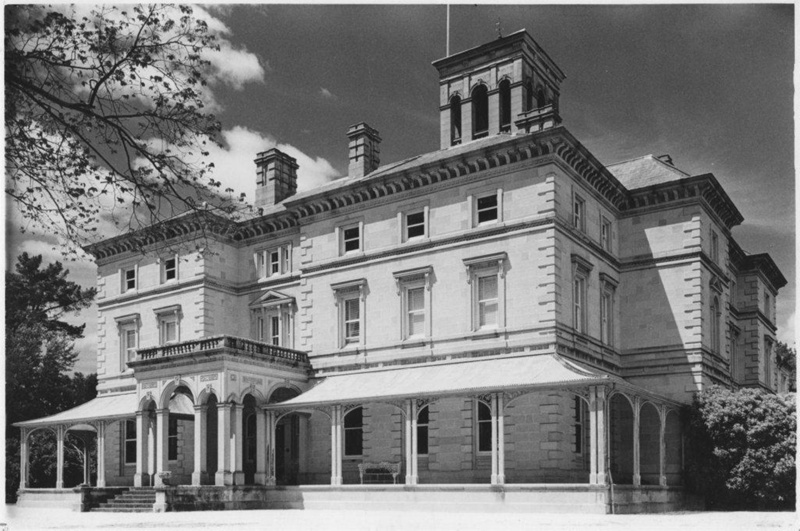 |
| Northern and western facade of 'Mona Vale', Ross, Tasmania. The present Mona Vale was completed in 1868. |
Mona Vale is a large heritage listed 1860s country house in Ross, Tasmania. Completed in 1867, it is well locally known as the "Calendar House", for its reportedly 365 windows, 52 rooms, 12 chimneys and seven entrances.[1]

- The property is on the Tasmanian Heritage Register and the Register of the National Estate (since 1978).[2]
- The present Mona Vale was completed in 1868. It was built by Robert Quayle Kermode at a cost of approximately £40,000. The architect was William Archer, Kermode’s brother-in-law.
- The sandstone house is also known as the Calendar House as it has 7 entrances, 12 chimneys, 52 rooms and 365 windows.
- The stained glass windows were created by the Ferguson & Urie stained glass company of North Melbourne and were selected by the architect of Mona Vale, Henry Hunter, during a visit to Victoria in 1867.
"I observed the beautiful windows of stained glass, which surround the front door. The fanlight is especially worth mention, having in the centre Mr. Kermode’s crest, an arm and dagger surrounded by a handsome design.
The side lights have a stained glass bordering, with centre pieces in frosted glass of floral design. Arrived at the foot of the grand staircase, I observed that the whole of the windows by which it is lighted were also of stained glass, showing groups of flowers most tastefully arranged. The whole of these windows are in the style known as enamel painting, and were executed by Messrs. Ferguson and Urie, of Melbourne, some of them being selected for Mr. Kermode by Mr. Henry Hunter, during a late visit to Victoria" Read More
 |  |
 |  |
- It is in excellent repair and forms the nucleus for what is really a small settlement with numerous outbuildings, cottages and even a small chapel.
- The landscape and its natural qualities have been respected and additional plantings carried out to create a fine setting for the house.
|
| ||||
- Robert Kermode had liberal and enlightened views and contributed largely to the building funds of various churches and public institutions in the Ross district.
- In 1865 he commenced the third family home at Mona Vale; built of local sandstone, it had a tower and over fifty rooms and was, and most likely still is, one of the largest private homes in Australia.
- Robert Kermode was said to be an outgoing person, very generous in his hospitality.
- Amongst the many people who came and stayed at Mona Vale was Count Strzlecki who advised him on an irrigation project that is in use to this day.
- Mona Vale and the neighbouring Beaufront, Charlton, Wetmore and Somercotes are interlocked with irrigation channels mapped byStrzlecki. Read more: Robert Quayle Kermode died on 4 May 1870 and was buried at Ross.
- The Duke of Edinburgh was entertained there in 1868.
- Mona Vale has received multiple royal visits over its lifetime. In 1868, Alfred, Duke of Edinburgh visited, and later the then Duke of York (future King George VI) and the Duchess of York visited in 1927, with then Princess Elizabeth (Elizabeth II).[7][8]"The narrative would, however, be very incomplete unless accompanied by some kind of description of the mansion at Mona Vale, where His Royal Highness stayed on his upward and downward journey, and where every provision was made for his comfort, which the real genuine hospitality of an English gentleman could devise, or Princely munificence accomplish.
The mansion of Mona Vale is, I have no hesitation in saying, one of the most splendid and magnificently furnished residences in the whole of the Australian colonies, and it is replete with every comfort and conveniences that modern art has yet suggested." Read More
- It was purchased by the Cameron family in the 1920s.[9]The Cameron Familyarrived in Tasmania in 1822, when Donald Cameron (1780–1857), Scottish surgeon, obtained a land grant, located at Fordon, Nile. He acquired other properties, and from that date the Camerons have been included among Tasmania's leading pastoralists. Donald (1814–90) and his wife Mary extended the family holdings, including Lowestoft at Chigwell near Hobart; Donald entered the Legislative Council where he was ultra-conservative, and Mary is credited with introducing Jersey cattle to Tasmania. Their descendants flourished, and today family members own many properties in the Midlands, notably Mona Vale and Lochiel at Ross.
- The estate was also the site of a military training ground, and the camp of a light horse regiment during WWII[10][11][12]
- Tasmanian Heritage Register Place ID #5266
- More about Victorian architectural style; More about Italianate style
- More about the builder of 'Mona Vale', Merchant and Settler William Kermode - top of page
30. The Grange High Street, Campbell Town, TAS, Australia

|  | ||
 |  | ||
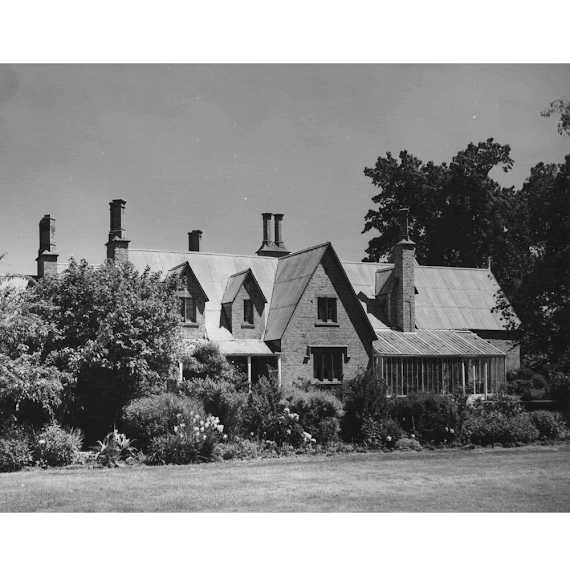 |
| Details of the building of the Grange |
- The brickwork is of very high quality with label moulds over windows, and elaborate decorative paired and single chimney stacks, octagonal or turned through 45deg on their bases.
- Exceptionally elegant Oriel window under north gable with bricks corbelling out to form bay shape. Separate tower to north-west and original glazed conservatory.
- Website: www.**thegrange**.com.au/
The Grange, central Tasmania's premier meeting venue catering for government, business and community organisations, is located in Campbell Town. Since opening in October 2007 the owners June Tyzack & Gary Price have welcomed more than 100,000 delegates attending in excess of 6000 meetings and functions. - Tasmanian Heritage Register Place ID #4943
- More about Gothic Revival style - top of page
Campbell Town | Campbell TownCampbell Town was established in the 1820's as one of a chain of garrison stations between Launceston and Hobart, 12km north of Ross.
The Convict Brick Trailat Campbell Town commemorates some of the nearly 200,000 convicts who were transported to Australia between 1788 and 1868.
|
31. Cawarra & Grounds 52 Risdon Road New Town, TAS, Australia
- Listed on the Register of the National Estate as an Indicative Place
|
| ||||
|
|
- A two storey cottage ornee of assymetrical design, this building is of tooled sandstone with ashlar quoins, window surrounds, chimneys etc.
- The roofs are gabled, with very elaborate barge boards, and on the front gable, a wooden finial resembling a chimney.
- Windows have label moulds above, small panes, and decorated lugsills.
- A triangular topped window at first floor is directly over a slightly bayed window at ground floor.
- The entrance porch is of a heavy, elaborate design. Well landscaped grounds.
- The ornate gable bargeboards and porch are of particular interest.
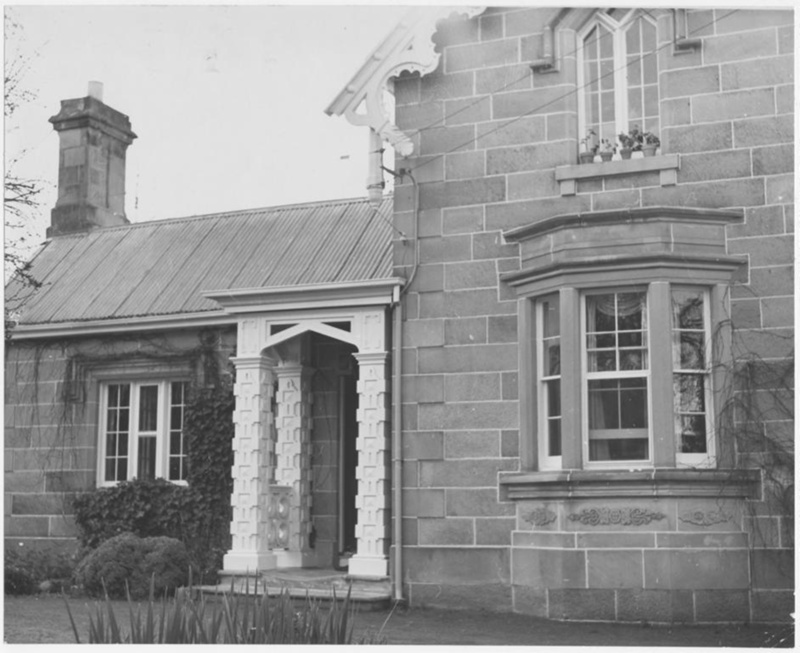 |
| Cawarra, Risdon Road, New Town; from National Trust of Australia (Tasmania) |
John McGrath, licensed victualler (innkeeper), purchased 4 acres including the land where Cawarra now stands in December 1845.
- Cawarra (originally known as Clonsilla) was probably built shortly afterwards and the architect is reputed to have been William Porden Kay who built the nearby Barrington Lodge in 1848.
- James Staines Taylor (1833-1910) purchased Cawarra on 1.5 acres in November 1903 for 700 pounds. Taylor was a Master Mariner who operated the vehicular ferry service across the Derwent between Hobart and Bellerive from 1863 until 1903.
- Taylor died in 1910 but his widow, Rosina, continued to live there until the early 1940s.
- By this time Cawarra was in a state of neglect but it was restored by Stewart MacRae MacGregor during the 1950s.
- Tasmanian Heritage Register Place ID #2733
- More about Rustic Gothic style; Gothic Revival style - top of page
32. Gunpowder Magazine and Old Guard House Port Arthur, TAS
Port Arthur was named after George Arthur, the Lieutenant Governor of Van Diemen's Land. The settlement started as a timberstation in 1830, but it is best known for being a penal colony.
|
| ||||
| Guard Tower | Gunpowder Magazine and Old Guard House |
- Port Arthur, Tasmania, From Wikipedia, the free encyclopedia
- First convicts arrived 22 September 1830.
- In 1835 work commenced on stone and brick structures. Abandoned 1877.
- The settlement represented a hesitant but willing attempt at penal reform by bringing the element of rehabilitation into the punishment. Port Arthur was established to replace the infamous Macquarie Harbour penal establishment which was abandoned in 1833.
- The first permanent buildings were erected during the term of Captain O'Hara Booth, Commandant of Port Arthur in 1833-1844.
- Many buildings remain either intact or as ruins resulting from time weather and uncontrolled bushfires.
 |
| Magazine and Commandant's Cottage, Port Arthur, Tasmania.; Thwaites, Jack; 1969; TSO00018562.10 |
 |
| Location of Port Arthur. Tasmania, Australia |
- From 1833, until 1853, it was the destination for the hardest of convicted British criminals, those who were secondary offenders having re-offended after their arrival in Australia.
- Rebellious personalities from other convict stations were also sent here, a quite undesirable punishment.
- In addition Port Arthur had some of the strictest security measures of the British penal system.
- The peninsula on which Port Arthur is located is a naturally secure site by being surrounded by water (rumoured by the administration to be shark-infested). The 30m wide isthmus ofEaglehawk Neck that was the only connection to the mainland was fenced and guarded by soldiers, man traps and half-starved dogs.
- Despite its reputation as a pioneering institution for the new, enlightened view of imprisonment, Port Arthur was still in reality as harsh and brutal as other penal settlements. Some critics might even suggest that its use of psychological punishment, compounded with no hope of escape, made it one of the worst.
- Tasmanian Heritage Register Place ID #2920
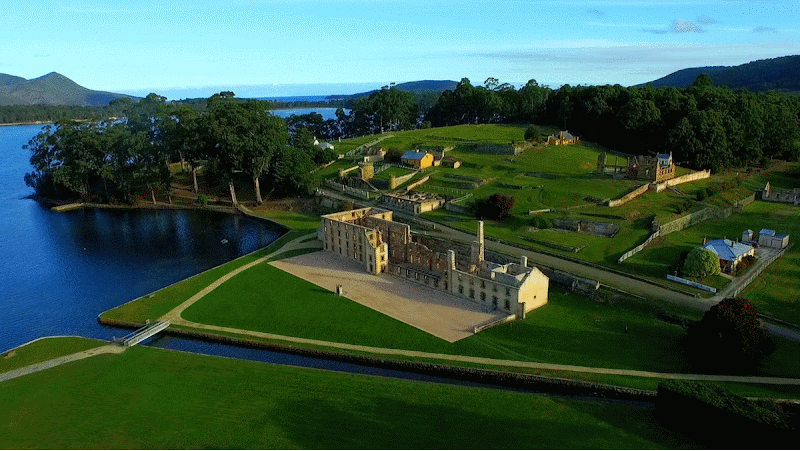 |
| Port Arthur Historic Site |
Port Arthur Site | Port Arthur, TasmaniaThe World Heritage-listed Port Arthur Historic Site on the Tasman Peninsula is Australia's most intact and evocative convict site, and an essential destination on any tour of Tasmania.
|
33. The Cottage 27 Main Street, Kempton, TAS, Australia
Listed on the Register of the National EstateThe Cottage, Kempton
The building contributes to the townscape of Kempton.
- Single storey stone Victorian cottage. Attics with dormers. Iron hip roof. Main facade of five bays with large two pane windows and shutters.
- Central two panel door with half sidelights and transom light.
- Quoins and reveals to door expressed. Single storey timber verandah with small iron brackets and frieze.
Brick stables at rear. Picket fence. Side stone wall.
34. Longford House & Barn Brickenden Street, Longford, TAS, Australia
An early district homestead of uncertain date, yet by style and comment appears to be about 1839.
| Longford House, 120 Catherine Street, Longford, Tas 7301 |
LONGFORD House built circa 1834 is known as one of Tasmania’s finest colonial homes.
- When advertised for sale in The Examiner newspaper in November 1854 it was described as, “all that noble mansion, domain and garden, situated in the suburbs of Longford and known as Longford House.
- The edifice is handsome, extensive and commodious, and is in thorough repair, with every accommodation of offices, outhouses, prolific garden, and a well of the purest water.”
The house then, as now, is offered for sale with the original 8.9 hectares of land, comprising 2.2 hectares of parks and garden, an orchard, barn and 6.7 hectares of meadow, divided into several paddocks.
- The estate is completely surrounded by hawthorn hedges, ageing white gums and English oaks.
|
| ||||
|
- The house sensitively renovated for comfortable living has retained the original charm of the Georgian period, whilst combining a contemporary space in the kitchen and living areas. French windows and doors open to the garden on all sides, radiating a light and warmth throughout the house
- The estate is surrounded by hawthorn hedges, white gums, English oaks and a collection of plants which complement the history architecture and atmosphere of this charming property.
- The water right with the property provides opportunities for the keen gardener, horticulturalist or any number of enterprises.
- Sold for $1,400,000 Date: Sat 18-Jul-2015
- Read more; Longford House - a piece of history
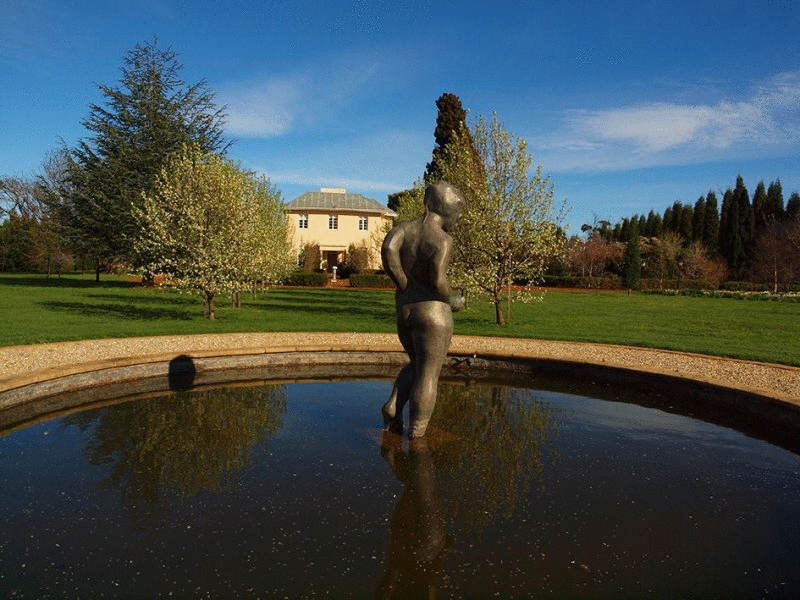 |
| Longford House. Longford, TAS, Australia |
Two storey brick and stucco Georgian house. Iron hip roof.
- Two by five pane (level two) and two by seven pane (level one) windows. Four panel front door and transom light in casing with Doric portico.
- Unusual curved wall with arches shields earlier one storey vernacular house of brick construction.
- Also demountable cast iron framed barn with frame in form of pilasters - third site.
- This would have the builder as Joseph Solomon who sold to Major HC Cotton in 1845.
- The main part of the house is two storey Georgian but this adjoins a vernacular cottage of even earlier origin.
- There is also an unusual iron framed demountable barn, imported from Britain and first erected at Wesley Dale.
- Tasmanian Heritage Register Place ID #5087
- More about Colonial Style architecture - top of page
- Read more about Longford Historic Town in National Estate; Appendix Longford Historic Town
Longford, Tasmania | Town of LongfordLongford is a town in the northern midlands of Tasmania, Australia. It lies 145 m above sea level at the convergence of the Macquarie River and the South Esk River, 21 km south of Launceston and a 15-minute drive from the airport.
|
35. 27 De Witt Street, Battery Point, TAS, Australia
- Listed as Group of Houses 1-33 De Witt Street, Battery Point, TAS, Australia
- A very unified collection of Georgian and Victorian houses and cottages producing a streetscape of memorable impact.
- All the land had one original owner, who obviously began construction on the more elevated sites south of Logan Street, leaving the lower sites near Hampden Road until later when Victorian houses were built.
- One and two storey cottages and houses of mostly Georgian design with some of Victorian design.
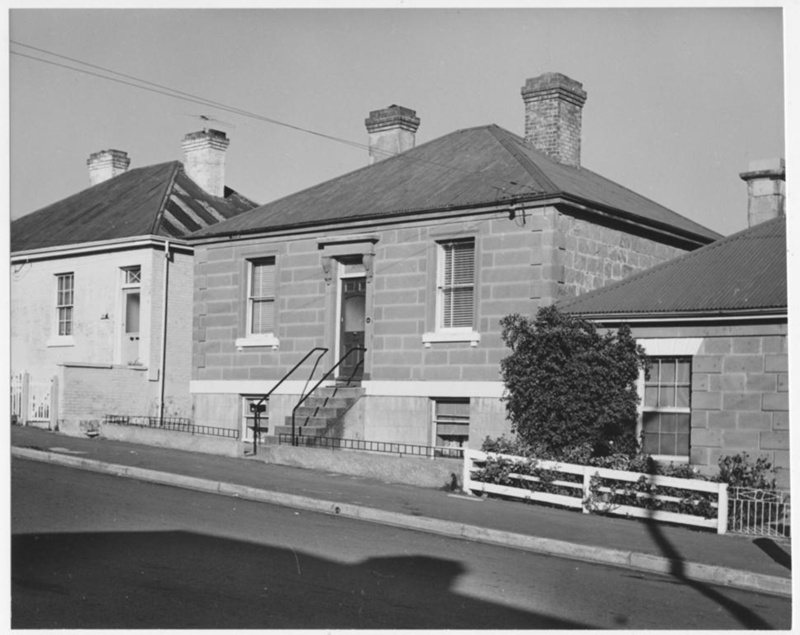 |
| Stone Cottage, in De Witt Street, Battery Point, Tasmania. This (mis-identified as no. 27) image is part of a large collection of photographs which were entered in The Mercury Historic Homes Photographic Competition, 1963. |
- Apart from nos 11 and 13 which are single storey stone cottages, the remainder are of brick construction.
- Georgian buildings have iron roofs while Victorian have slate or tile roofs.
- Most buildings are aligned with a small setback from the street front.
- Tasmanian Heritage Register Place ID #1711
- More about Victorian Georgian style
- Rent $480 per week 27 January 2016
36. Patriot King William IV Hotel (Former) now Blenheim, 16 High Street Evandale, TAS, Australia
- Listed on the Register of the National Estate
- Evandale is situated in the Australian state of Tasmania, on the South Esk River 20 km south of Launceston and 5 km from the main highway and Launceston Airport.
- Evandale today is a National Trust classified Georgian village, popular with tourists for its unspoiled heritage buildings
- Evandale was the home of John Batman the founder of Melbourne and John Kelly, the father of "our Ned" served time as a prisoner here.
|
|
"Blenheim, built in 1826 on Evandale’s High St, had recently been passed in at auction when the Clarks stumbled across it on their way to the airport.
- The 1978 auction notice called it “one of Tasmania’s finest country homes” but when the Clarks bought it in 1979, the dilapidated house was anything but impressive, though it did have a ballroom.
- “We slowly brought it back to life,” says Victoria." The transformation from derelict to dame happened gradually.
"The Georgian beauty of the property is not reserved for its permanent residents.
- Visitors are welcome to stay in a wing that tastefully pays homage to Blenheim’s heritage.
- The bed and breakfast accommodation complements a glassware emporium on the side of the house as well as Victoria’s antique shop at its front.
- "Beyond the racks of vintage clothes and collectables, the house is a treasure trove." Read More:
 |  | ||
 |  | ||
 |
| ||
| Blenheim Bed and Breakfast is situated in a beautiful garden in historic Evandale, near Launceston Airport.
The ensuite accommodation is spacious and well-lit, with comfortable furnishings in keeping with the period.
Website: http://www.blenheim.com.au/ |
Blenheim, 16 High Street, Evandale
- Built in 1832 by John Williatt as the Patriot King William the fourth inn, this substantial brick building with its fine facade, rear service wings, outbuildings and courtyard is an essential element of the historic village of Evandale.
- This delightful two-storey red brick building has a slate hipped roof and projecting eaves.
- The five-bay front facade has a corniced portico with stone entablature supported on four Tuscan columns.
- An assembly room upstairs was used for concerts, dancing, and a meeting room for the Masonic Lodge and other groups.
- Outbuildings included a brew house, stables, blacksmiths shop, cottage and loose boxes. Some of the buildings were destroyed by fire.
 |  |
 |
- Five bay front facade with four by fifteen pane windows to level two, with central French windows onto portico and two pairs of French windows below. Central pair of two panel doors with transom light.
- Four truscan columns support stone entablature and corniced portico. Brick lintels to openings. String course.
- Rear twelve paned windows. Two hip roof wings at rear - nine pane windows to level two, twelve pane to level one.
- Terrace of brick cottages/outbuildings across rear of courtyard. Skillion roof.
- Read more about Evandale Historic Town in National Estate; Appendix Evandale Historic Town
| Historic Evandale - Tasmania, Australia | Evandale, Tasmania Tasmania and New South Wales were the only states of Australia to have been settled and developed in the Georgian era
Today these Georgian era villages are like time capsules, frozen in time, their buildings lovingly restored to their original condition.
Evandale today is a National Trust classified Georgian village, popular with tourists for its unspoiled heritage buildings, notably
|
- Note: there is no official listing of Evandale as National Trust Classified. These pages exist to remedy that terrible lack.
- More about Victorian Georgian style
- Tasmanian Heritage Register Place ID #5013
37. St Matthias Anglican Church and Graveyard 431 Windermere Road Windermere, TAS, Australia
St Matthias Anglican Church, at Windermere, is one of Tasmania’s most beautiful heritage listed churches. |  |
 |  |
- Note: Mathias Gaunt always signed his name as 'Mathias' (ref. AOT), though his gravestone has Mathuis.
Windemere, TAS
|
- When Dr Gaunt resolved to emigrate to Van Diemen’s Land in 1831, his wife was concerned that there may not be a church in the area where they would eventually make their home.
- Dr Gaunt promised that if there was not, he would build one for her. Consecrated in 1845, St Matthias is one of Australia’s oldest churches in continous use since its foundation.
- With its dominant and picturesque setting on a bend of the Tamar River, it is a landmark which has been held in high esteem throughout the Tasmanian community for a century and a half (E.1).
- It is also an important example of the work of architect, Robert de Little, and was one of the first buildings to be consecrated by the Rt Rev. Francis Russell Nixon, first Bishop of Tasmania
- More about Colonial Gothic picturesque
- Tasmanian Heritage Register Place ID #4704 - top of page
38. Callington Mill Historic Site Old Mill Lane, Oatlands, TAS, Australia
Callington Mill, a working Georgian windmill built in 1837. A fine group of historic Colonial buildings built by John Vincent and completed in October 1837. Although the buildings are freestanding, there is a strong relationship between them and they are centred on a five level windmill. All buildings are of stone with many having shingled roofs.
- The restoration of Callington Mill to its former glory was completed in 2010 & the first turning of its sails after being dormant for so many years was a magnificent sight.
- The mill is the only working example of its type in the southern hemisphere and produces quality flours driven by the fresh winds of Oatlands.
 |  |
 |  |
- Read more about Oatlands Historic Town in National Estate; Appendix Oatlands Historic Town
Village of Oatlands | Oatlands, TasmaniaOatland's major attraction is Callington Mill on Old Mill Lane which was built in 1836 by John Vincent.
Original buildings have been reinvented as retail outlets, galleries, bakeries, cafés and accommodation.
|
- Visit website; http://www.callingtonmill.com.au/; Callington Mill at Wikipedia
- Read more about Colonial Style architecture
- Tasmanian Heritage Register Place ID #11649 - top of page
39. Oakington 15 Napoleon Street, Battery Point, TAS, Australia
 |
| Oakington Circa 1840, with Picturesque Harbour Outlook |
|
| ||||
|
|
- An essentially Georgian stone house, transformed into an eclectic design by the later addition of (early Federation style) verandahs, the house now has a distinctive horizontal line achieved through the visual layering of parapet, verandah and front stone wall.
- The building is an important part of the Battery Point townscape.

- Built in 1840, Oakington represents a magnificent example of classic Victorian Georgian architecture with an absolutely stunning street presence and superb Harbour views."
|
|
- Single storey verandah added later - central curve, iron balusters, iron brackets.
- Twelve pane windows. Round-head arched dormers with pilasters.
- Low stone wall and iron fence. Impressive views of Derwent. Large garden.
- Sold for $1,420,000 Date: Wed 16-Nov-11;
Sold by private treaty 24 December 2015 Price Withheld - More about Colonial Style architecture
- Tasmanian Heritage Register Place ID #1886 - top of page
40. Wingfield 262 Davey Street, South Hobart, TAS, Australia
An excellent example of an 1830s Old Colonial Regency style house in original condition (Criterion B 2). |
| Wingfield Garden, 262 Davey St, South Hobart |
|
|
The residence is single-storey, with a return verandah. It has simple elevations and an iron hip roof.
- The verandah has clustered columns, and French doors giving onto it, with eight panes, and eight narrow edge panes.
- There is a protruding bay with 16 pane French doors and a highlight opening to the garden.
- The house was erected for the owner, GH Barnes, Hobart's Collector of Customs, in 1835.
- The property has changed hands several times since then.
- Wingfield is part of a precinct of early large town houses, including Bellona, Ryethorpe, and other properties.
Wingfield Garden
'Wingfield' garden has horticultural significance for containing old varieties of fruit trees and vegetables (criterion C 2).- 'Wingfield' garden has significance for demonstrating an early 19th century middle sized town garden by the following features:
- a classical design style with axial connections to the house and an axial vista from the house through an arched gateway;
- a profusion of shrubbery with interlaced paths; use of oaks as dominant tree species along the boundary;
- a separate hedged vegetable garden; box hedged flower gardens; garden elements of gravelled paths with terracotta edging and a stone urn,
- remnants of a cobbled court; a formal front entrance with pedestrian access;
- and later period Gardenesque overlays with curving paths and more modern flower species (criterion D 2).
- The garden has creative significance for demonstrating a formal classical style in a restricted space which utilises the available prospect and traditional garden plant species (criterion F 1).
|
|
The garden is located in the southern higher region of Hobart. It was constructed in the 1830s as a setting for a middle sized Georgian style house.
- The garden is one of a small group of large town house gardens of similar style and the other similar neighbouring gardens are 'Bellona' and 'Ryethorpe'.
- The garden retains its early 19th century classical style and overlays of later Gardenesque features are evident by curving paths and later period flowers.
- The garden is laid out with its frontage facing the former Fitzroy Crescent, where there was a gate entry. Central to the front of the house are remnants of a formal rose bed hedged with box, and beyond this is a profusion of shrubberies, interlaced with winding paths.
- A gravelled carriage way leads from Davey Crescent and is bounded on one side by a laurel hedge. The eastern boundary is edged with mature oaks under which are Man Ferns.
- To the rear of the house is the remains of a cobbled court and beyond is the hedged vegetable garden in which are old fruit tree varieties. Within the garden are some stone Colonial features; an urn, a water trough and an old stone tank.
- More about Colonial Style architecture
- Tasmanian Heritage Register Place ID #3103 - top of page
41. Cawood and Outbuildings 167 Tor Hill Road, Ouse, TAS, Australia
- Listed on the Register of the National Estate
- A fine two storey Georgian stone house built by TF Marzetti before 1828 with side wings added by Henric Nicholas after 1844.
- The house is complemented by fine stone outbuildings comprising a light horse stables to the south of the house and a heavy horse complex to the north.
- The house and outbuildings form a unified group with good landscape setting.
|
| ||||
|
|
- Twelve pane windows - plus four pane half windows each side for level one windows and level two central window. Twelve pane to wings. Four panel door with half sidelights and radial fanlight. Iron hip roofs. Additions at rear.
- Stone outbuildings including two level light horse stables and heavy horse stables of one storey and lofts. Stone buildings about courtyard. Good setting in landscape.
- More about Victorian Georgian style
- Tasmanian Heritage Register Place ID #884 - top of page
Ouse, Tasmania | Village of OuseLocated 88 km northwest of Hobart is the rather quaint little town of Ouse. Like so many of the towns on the Derwent River it was explored soon after the establishment of the settlement at Hobart Town. However settlers did not move into the area until the 1820s.One of the first buildings in the town was the Anglican Church of St. John the Baptist. There seems to have been some confusion over the town's name in the mid nineteenth century. In the 1840s it was known as Ousebridge which by the 1850s had become Ouse Bridge. By the 1860s it had been reduced to Ouse. The town's brief brush with literary fame occurred in the 1820s and 1830s when David Burn, Australia's first playwright, lived in a country house named Rotherwood near Ouse. His play The Bushrangers was performed in Edinburgh in 1829 and in 1842 a collection of his writings, Plays and Fugitive Pieces, was published in Hobart. It was the first collection of plays published in Australia. |
42. Courthouse, Watch House & Hall 54 Bridge Street, Richmond, TAS, Australia
 |  |
 |  |
- The original stone watch house is at the rear. Also included is a Victorian stone hall with an interesting facade. The group contributes to the townscape of Richmond.
- Council chambers-former court house. Stucco. Tall central section with bow front, pilasters and sixteen pane windows.
- Lower flanking wings with recesseds round head blind panels, pilasters and sixteen pane windows.
- Separate iron hip roofs. Entrance porch. Adjacent stone hall with cornice, entablatures etc to main facade. Two pane windows. Stone watch house at rear - twelve and eight pane windows.
- Read more about Richmond Historic Town in National Estate; Appendix Richmond Historic Town
- Tasmanian Heritage Register Place ID #1096 - top of page
|
| ||||
Town of Richmond | Richmond, TasmaniaRichmond is a picture-perfect town in the heart of Tasmania's Coal River Valley wine region that tells the story of an early Australian colonial village.
Read more about Richmond Historic Town in National Estate; or in the Appendix Richmond Historic Town |
43. St Johns Orphan School (former) now St Johns Park Hospital, St Johns Avenue New Town, TAS, Australia
The Orphan School and St John's Park Precinct situated in St. John's Avenue, New Town, Tasmania is a heritage site of local, state and national significance.
- The Orphan School buildings, constructed between 1831 and 1833, and St John's Church, built in 1834 form the nucleus of the Precinct.
- For more than 175 years sections of the Precinct have been associated with the provision of institutional care and services for Tasmanians in need.
- Following the closure of the Orphan School in 1879 the buildings were operated for some years as the Male Division of the New Town Charitable Institution.
- An Infant Orphan School, added in 1862 became the Female Charitable Institution in 1874. In the twentieth century several buildings were constructed to provide care for war veterans, children with paralysis, the mentally impaired and elderly people suffering from early dementia.
| Church & Orphans School, St John's Avenue New Town 1872 |
An essential part of the historic St Johns precinct, these Tudoresque buildings were designed by John Lee Archer to be symmetrically located on each side of St Johns Church.
- Although the roof dormers have been added to Archers' design, and unhappily part of the southern building has been demolished, the power of symmetrical design remains.
- It was the first purpose-built institution for orphaned, destitute and neglected children in the colony. Many of its residents were children born to convict women under sentence.
- Before the Orphan School opened in 1833, boys were housed in a disused distillery in New Town, and some girls placed in a private home in Davey Street, Hobart.
|
|
- This arrangement was refered to as a 'parish partnership' between the Church and government with the church designed specifically for the needs of the Asylum, convicts and free settlers.
- The children sat in one gallery and the convicts in the other with the settlers in the main body. Barriers and separate entrances prevented the children from seeing the convicts. Church of England clergy dominated the committee that managed the Asylum. Read more:
- Read more: http://www.orphanschool.org.au/
- Tasmanian Heritage Register Place ID #6612 - top of page
44. Ivylawn 1260 Westwood Road, Hagley, TAS, Australia
- Listed on the Register of the National Estate
- Sold for $915,000 Date: Fri 28-Jun-2013
|
| ||||
|
|
- A fine two storey house, it is now believed to have been built about 1842.
- At this time, the unusual massing and fenestration of the house would have been 40 years ahead of its time.
- Once a secondary house on the Quamby Estate, the building has an axial approach drive and fine garden which heightens its importance.
- Windows are grouped in threes (arch head to level two, flathead to level one) with Tartan glazing.
- The single panel double front doors feature generous half sidelights and arched transom light. Ivylawn is off Bass Highway at 1260 Westwood Road, 2km north-east of Hagley.
- Tasmanian Heritage Register Place ID #4833 - top of page

Quamby Estate - Quamby House Group, 1145 Westwood Road, Hagley, TAS, Australia
- Listed on the Register of the National Estate
- "Quamby" in Tasmania is between Hadspen and Westbury, which is west of Launceston.
- Godfrey and Sherrard, who are also the developers and co-owners of Noosa’s beautiful Makepeace Island with Sir Richard Branson, also own Tasmanian properties The Pilot Station at Low Head and Lake House, Cressy.
Following the purchase of Quamby in 2008 by Anthology, Quamby was given a complete make-over by heritage architects and builders to restore the home to its former glory.
- This 10-bedroom enchanting 150-acre property is rich in history dating back to the 1830s and is just 25 minutes from Launceston airport by complimentary hotel transfer.
- Quamby Estate was the ancestral home of Tasmania’s first-born Premier, Sir Richard Dry and following the change in ownership in 2011 has been lovingly restored
- All of the buildings have retained their heritage feel as they have undergone the restoration – this includes the spectacular marble fireplaces, wide verandahs, bushranger shutters, soaring ceilings, decorative cornices and servant bells.
- But in keeping with the notion that Quamby was considered “cutting edge” when it was first built, a contemporary look and feel was introduced to the interior design by tourism industry design specialists, Pike Withers, who were responsible for the makeover of the grand home. Artefacts, paintings and ceramics produced by local Tasmanian artists are featured at the Lodge.
- In 2009, following a $280,000 conversion, the stables began serving as the base for guests of the Bay of Fires and Cradle Mountain Huts Walks during the walking season from October to May each year. This will continue to happen under the new owners.
- The former contemporary “conservatory” style restaurant which was upgraded to a stylish and modern functions space for weddings, conferences and events will also remain open as will the beautifully groomed nine-hole private golf course.
 |  |
- An important house with Indian Bungalow and Chinese design influences, built 1828-38 by Richard Dry, an Irish politicl exile who arrived in Australia in 1800, was pardoned in 1819 and received a grant of 500 acres from Governor Macquarie and purchased 2000 acres in 1828.
- The Chinese influence in the design, as exemplified by the trellis work to the verandah and the fanlight over the entrance door, is said to be a result of Dry's son's visit to China (Richard Dry jnr was to become Premier of Tasmania)

The Chinese influence in the design of the house, as exemplified by the trellis work to the verandah and fanlight over the entrance door, is said to be the result of visit to China by Dry's son, who later became Premier of Tasmania.
- Single storey Georgian house with attics. Brick, part stucco. Indian Bungalow and Chinese influences. House has double hipped roofs - rear hip with end dormers.
- Return, stone paved verandah with turned timber posts and fine bracket and balustrade trellis work. Eight pane French doors in pairs with transom lights open to verandah. Unusual six panel entry door with half sidelight and diagonal pattern fanlight.
- Tasmanian Heritage Register Place ID #4832 - top of page
Quamby Managers House, Westwood Road, Hagley, TAS
- Listed on the Register of the National Estate
- The Georgian Club House was built in the 1850s as original Estate Manager’s office. - The Club House is home to the Sir Richard Dry Pavillion, bar and restaurant overlooking to spectacular and picturesque golf course
Read more: Website; Wikipedia
|
| ||||
|
|
- The manager's house is a two-storey stuccoed brick building, piered at the corners and with a string course at first floor level. It is hip roofed, and has an elegant single-storey pediment enclosed porch, with paired timber pilasters and timber boarding in imitation of stone.
- There is a timber cornice on brackets above the fanlight over the door. All ground floor rooms have internal shutters, and all upstairs windows have unusually patterned glazing bar divisions.
- Tasmanian Heritage Register Place ID #4830 - top of page
 |
| Quamby Estate |
The outbuildings contribute in an important way to the historical and architectural significance of the complex and reflect the range of farming activities carried out on the property, and the living and working conditions of the staff. The house and outbuildings have an intact rural setting.
|
| ||||
|
|
Quamby house is a single storey Georgian house with attics, with stuccoed brick with Indian Bungalow and Chinese influences.
- The house has double hipped roofs, and the rear hip has end dormers.
- It has return, stone paved verandahs with turned timber posts and fine brackets and balustrade trellis work.
- Eight-pane French doors in pairs with transom light open to the verandah.
- There is an unusual six-panel entry door with half sidelight and a diagonal pattern fanlight.
 |  |
 | 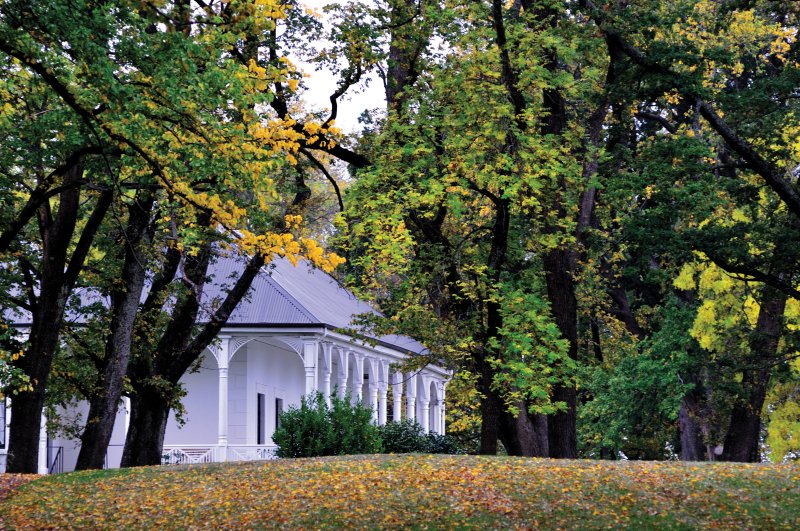 |

- Quamby’s golf course is a rare gem on the Tasmanian golf circuit. Constructed in the early 1990’s, this beautiful course is positioned on a high elevation with magnificent views to Ben Lomond in the East and the Great Western Tiers to the South.
- Fairways are lined by large mature trees planted in rows with garden avenues, hedgerows, watercourses, lakes and ponds. This picture-book landscape offers a challenging and entertaining experience for golfers of varied ability and experience.
- Tasmanian Heritage Register Place ID #4832 - top of page
 |  | ||||
|
|
Hagley, Tasmania | Village of Hagley, TasmaniaBlessed with rich red soil, the colonial village of Hagley is situated in the middle of some of Australia's best farm land.
|
 |
| Hazelnut Trees near Hagley - Hazelbrae Hazelnuts |
|
| ||||
|
|
- Quamby was the home of the first native-born premier of the state, sir Richard Dry. You can find his grave at St Mary's Church, which was built in the early 1860s.
- Quamby has become the Quamby Golf and Country Club and boasts an 18-hole golf course.
45. Franklin House, 413-419 Hobart Road, Franklin Village, TAS, Australia
An excellent example of a two storey Georgian house built 'on spec' for Britton Jones, an early Launceston brewer and innkeeper in 1838-9.
- It was purchased by Mr W.K. Hawkes who conducted a private school for boys for some 15 years.
- A feature of the building is its scholarly Ionic porch.
- The house was purchased by the National Trust in 1960, it became the birthplace of the National Trust in Tasmania, which was formed to save it, and is now also home to the Trust’s State Office;.restored and opened to the public in 1961.
|
| ||||
|
|
- Front facade is stuccoed and has string course between two levels. Central front door has half sidelights and semi-eliptical fanlight. Entrance poritico has entablature and cornice supported on paired fluted Ionic columns.
- House has two side wings at rear, two-storey gabled, single storey with hipped roof. Steep pitched verandah on back of house joins both wings.
- Built by former convict and successful businessman Britton Jones, Franklin House is notable for its rich use of imported Australian Red Cedar.
- Extended to accommodate one of the colonies leading private schools which operated there from 1842 until 1866 the house finally became the birthplace of the National Trust in Tasmania in 1960.
- The Tearooms are open during house hours for light meals and refreshments. The Metro Bus services, numbers 40 and 50 from the City to Franklin village, stop outside the House.
- Opening Times: 0900 - 1600 Monday - Saturday and 1200 - 1600 Sunday. Closed Christmas Day, Boxing Day and Good Friday.
- Read more: Wikipedia, WebsiteTasmanian Heritage Register Place ID #4388 - top of page
46. Swanston House and Stables 37 Tower Road New Town, TAS, Australia
- Listed on the Register of the National Estate(known as 7 Emmett place on the list) (former New Town Park)
- Swanston was an extremely powerful figure in the colony acting as an import and export agent for a number of firms, attracting large amounts of overseas capital for investment at high rates of interest, and becoming managing director of the Derwent Bank.
- In 1835 Swanston formed the Port Phillip Association which supported John Batman's expedition to establish grazing properties in today's Victoria (this is why one of the main thoroughfares in Melbourne is called Swanston Street).
- Swanston House was built in the mid 1830s by Thomas White and Henry W Seabrook, a building partnership responsible for constructing many of the principal residences in New Town.
- Swanston was financially ruined by the economic depression of the late 1840s and New Town Park was advertised for public auction in February 1850. 'The much-admired, splendid, commodious, and most delightfully situated family mansion … suitable for a family of the highest respectability' was purchased by William Carter (c1796-1878), the first Mayor of Hobart.
- The estate was purchased by the Tasmanian Government in March 1941. Crowther (1962) states that when the property was acquired it was 'complete with the earlier low wing and court yard. These have been demolished in planning the new obstetric hospital and nurses home but the Swanston mansion and granary have been retained.'
- Successive owners include William Carter (Hobart's first Mayor), Henry Hopkins, Henry Cook and JW Whyte. The house and stables are now incorporated in the Hospital and Nurses Home.
|
| ||||
|
|
- Six panel (double door) entrance with half sidelights and eliptical fanlight. Pediment over entrance. Casement windows.
- House comprises three hipped roof sections - now with unsympathetic tiles. Extensive additions. Adjacent two storey stone stables and attics. Undressed blocks to quoins. Two transecting gables. Windows replaced.
- Tasmanian Heritage Register Place ID #2762 as Swanston House - - top of page
New Town, Tasmania | New Town, TasmaniaSituated 4kms north of the CBD of Hobart Tasmania, New Town is one of Hobarts oldest suburbs.
|
47. Runnymede House, Stable & Gates 61 Bay Road, New Town, TAS, Australia
- Listed on the Register of the National Estate
- Tourist Attraction; Access by guided tour only. Bookings recommended. Bookings here
 |
| Runnymede House, Stable & Gates 61 Bay Road, New Town |

- A beautifully preserved 1840 whaling captain's house and gardens, and a fine Regency stone home, the house includes a music room added by Bishop Nixon in 1850, a delicate trellis verandah of Huon Pine, delightful wooden entrance gates, original coachhouse and stables.
- When Captain Charles Bayley bought the house in 1864 he named it Runnymede after his favourite ship. The Bayley family lived in the house for the next 100 years. Now dedicated to marine conservation, the house has a large collection of whaling and maritime items that belonged to Captain Charles Bayley and his family.
- There are also historic artworks and possessions of the house’s other owner, Francis Nixon, Tasmania’s first Anglican bishop.
 |
| Runnymede House, Stable & Gates 61 Bay Road, New Town |
- The name of the house was changed from Bishopstowe (Bishop Nixon) to Runnymeade by Capt Charles Bayley (after one of his ships).
- Runnymede is now owned by the Tasmanian Government and is on a 99 year lease to the National Trust.
 |
| Runnymede New Town, TAS |
 |
| The historic Runnymede garden features many historic trees and plants. |
- Stroll through the beautiful rose gardens and orchards. The house and gardens are accessible by guided tour (bookings advised) and there are also public and private events held at Runnymede throughout the year.
- Captain's House and Garden Tour (one hour):
Tour the elegant 19th-century house and gardens with an experienced guide during a fascinating and informative 1-hour tour. - Take Tea with Harriet (35-minute Strolling Theater performance including tea): Step back in time to meet one of Runnymede's colonial inhabitants during a strolling theater performance with an actress who plays the whaling captain’s daughter. During the 35-minute stroll through the house, hear about the Bayley family’s life and times as you see the home through the eyes of the daughter as you enjoy a delicious light afternoon tea in the drawing room.
- Runnymede Conservation Tour (1-hour tour followed by tea): Learn all about the magnificently restored house as you walk through the home and gardens with a curator or senior guide from the National Trust on an exclusive ‘behind the scenes’ tour that concludes with morning tea in the drawing room.
Read more about Runnymede Historic House and Garden Tour - Hobart - Opening Times: Tours run Tuesday to Friday at 1000, 1100, 1200, 1300, 1400 & 1500, and Saturday at 1230, 1330, 1430. Strolling Theatre is on Wednesday and Friday at 1500, and on Sunday at 1530. Closed July and August, Christmas Day, Boxing Day, New Year's Day and Good Friday.
- Tasmanian Heritage Register Place ID #2652 - top of page
 |
| Summerhome, from John Smith Collection-Early dry plates |
48. Summerhome, 2 Hopkins Street, Moonah, TAS Australia
- Listed on the Register of the National Estate
- Tourist Attraction
- WINNER Category 3 "Best maintained privately owned house open to the public"
Summerhome, a Georgian mansion, was built in the 1840s as the summer home of wealthy merchant Henry Hopkins and his wife Sarah (their winter home was Westella in Macquarie Street).
- Hopkins had arrived in Van Diemen's Land in 1822 and generated substantial wealth from developing the colony's wool trade and establishing a successful ironmongery business in Hobart.
- Hopkins lived in Westella, a grand stone house in Elizabeth Street, Hobart that he had built in 1835.
Henry Hopkins, merchant and philanthropist (Hobarts first woolbuyer and exporter) credited with the foundation of Congregationalism in Tasmania.
|
|
| ||||||
|
| |||||||
- Henry Hopkins (1787-1870), merchant and philanthropist, was born on 16 August 1787 at Deptford, England. He was brought up in a pious Nonconformist middle class home and had a sound business training, spending '16 years in the wool trade in England'. He married his cousin Sarah Rout and sailed with her from Deptford in the Heroine.
- Hopkins arrived in Hobart Town in 1822 with a shipment of boots when they were in short supply. On 28 December 1825 Hopkins applied for a land grant, offering as qualifications his long experience in the wool trade and a capital of £2000. The application failed because he would not accept the required residence conditions, but as a townsman and trader he rapidly prospered.
- He made a huge profit and invested the earnings in local wool for export to England. He had begun life in Hobart Town sharing a two-room house with an Earth floor with his wife. Read more On the Convict Trail.
About Summerhome
- John Blackwell was granted 300 acres of land on the northern side of the New Town Rivulet in July 1821. Robert Wilkins Giblin purchased 165 acres from Blackwell in 1827 and built Claremont Cottage (today’s 4-6 Webber Street).
- In 1832 Giblin built 'an airy commodious house … expressly for a school of the first respectability' on his 165 acre property. The school was called the 'New Town Academy' but did not achieve great success and advertised for enrolments for the last time in January 1838.
- Giblin had taken out a series of mortgages with Henry Hopkins in 1832 (presumably to pay for the construction of the New Town Academy) but had been unable to make the repayments.
- In December1839, Hopkins agreed to cancel the debt in return for 129 acres of Giblin’s property, including the New Town Academy building.
|
| ||||
|
|
- Hopkins enlarged the New Town Academy building to become Summerhome, a semi-rural retreat where he lived during summer.
- When Hopkins died in 1870, Summerhome passed to his daughter, Martha, and her husband, The Reverend George Clarke. By bizarre coincidence, Clarke had been a student in the building when it was Giblin's New Town Academy.
- Clarke leased out the house when he travelled to Europe in 1874 and there is a description of Summerhome in the newspaper notice – 'The house contains 16 rooms, besides kitchen. The outbuildings comprise a lodge, stables, cow sheds, coachhouses, washhouses, storerooms, diary, greenhouse, and every convenience usually found in a gentleman's establishment.'
 |  |
 |  |
 |  |
- French doors with transom light opening onto single storey timber verandah. Ten pane casement windows to level two. Iron hip roof. Incorporates earlier cottage at rear. Adjacent brick gable outbuildings and stone outbuilding. Fine garden (extensive). Parapet and cornice to main facade.
- When the Clarkes died in 1913, Summerhome passed to their daughter, Grace, and her husband, Arthur Walch.
- Today, 170 years after Henry Hopkins acquired the property, Summerhome is still owned and occupied by his descendants.
- Summerhome is noted for its formal garden, laid out in the 1850s; its conservatory; and its cathedral avenue of lime trees.
- As the same family has owned it since it was built, there have been few changes, and the nineteenth-century wallpaper, furniture, servants’ bells etc remain.
- Tour Commentary given by Henry and Sarah’s great-great-grandchildren, Margaret Hansen, Julia Johnson and James Alexander.
- Tasmanian Heritage Register Place ID #1632 - top of page
Summerhome Garden, 2 Hopkins Street, Moonah, TAS, Australia
An excellent example of an intact early Victorian garden established as a summer home, from Hobart, in the days when Moonah was in the country.- The house and garden was created as a summer retreat by Henry Hopkins, a prominent early settler and business man. He and his wife Sarah were inspired by their travels through Europe and England in the early 1840's.
- After retiring, they created the garden in the image of the grand gardens they'd seen in France and England.
- He was so passionate about the place that he made it a condition of his will that the garden had to be maintained and passed it on to his daughter who he felt would take the best care of it.
|
| ||||
 |
|
- Highly significant in demonstrating intact a quality and style of landscape gardening which has almost disappeared.
- Of particular importance is the huge parterre and the original glasshouse.
- The plantings are very interesting, being a fine example of the Gardenesque, Victorian style with a good range of plants representative of the period (mid 19th Century).
| ABC Fact Sheet: 'Summerhome' |
The gardens are filled with an array of plants, many of which are original plantings. The parterre gardenis a formal and ordered garden, popular in Victorian times, when the garden was first created.
- The Box hedge used in the garden (European Box - Buxus sempervirens). "This has been here for 160 years,"
A large Cabbage Tree - Cordyline australis. Marg explains: "There's a photo taken in 1859 when it was just a tiny little tree," she explained. "So it's 150 years old then", "I just love them. They've got this amazing texture to the bark. It's almost like an elephant's trunk or legs."- Part of the garden is known as 'The Wilderness' - an area filled with well established elms and ash. "Well it certainly lives up to its name. It's like walking through an English woodland. It's got these massive big trees like the oaks that give you a good amount of shade. This must have been a magical place to grow up as a kid". - ABC Fact Sheet: Summerhome, Moonah Tas
- Tasmanian Heritage Register Place ID #1632 (Summerhome entry) - top of page
Moonah, Tasmania | Suburb of Moonah, TasmaniaMoonah is a residential and industrial suburb, north of central Hobart, in Tasmania. It is part of the traditional territory of the Muwinina people.
|
49. Northbury Wellington Street, Longford, TAS, Australia
Built by Edward Archer in the Italian style, popular in Tasmania in the middle of the 19th century, Northbury was built in 1862.

- Numerous members of the Archer family, politicians and local landowners were born in Longford. Tens of thousands of acres have been farmed by Archer descendants, who remain central to agriculture in Tasmania.
- The Archer family are a notable family in Tasmania, Australia, prominent in society, business and politics of Tasmania for the last two centuries. They are best known today for their now world-heritage listed farm estates, Brickendon Estate and Woolmers Estate, but have contributed to many areas of Tasmania throughout their history. Read more at Wikipedia
|
| ||||
|  |
- This fine Victorian Italianate Villa is in good order and intact, and features a three storey tower and arcaded loggia. The building has a good setting in the landscape.
- Two storey brick and stucco Victorian Italianate Villa. Gable roof of slate - bracketed eaves.
- Three storey square tower with round and square head openings in recessed panel with prominent sills.
- Single storey arcaded loggia - arches with decorative keystones. Four, six and twelve pane windows. Bay windows. Two storey hip roof section at rear with twelve pane windows.
- Tasmanian Heritage Register Place ID #5177 - top of page
50. Town Hall, St John Street, Launceston TAS, Australia

A fine example of a large Victorian Italianate Town Hall in original and intact condition.
A typical Victorian building of painted stucco with Corinthian columns. It was designed by Peter Mills and erected in 1864.
- Richly modelled facades and imposing two Storey colonnade make this a memorable building.
- It is a building essential to the character of central Launceston + part of an historic precinct. The council chamber + Upper foyer remain as excellent interiors.
 |  |
 |  |
- Eastern facade has giant colonade of Corinthian columns. Engaged Corinthian columns extend around the other walls.
- Windows generally are arch topped and prominent ground floor windows are flanked by engaged columns supporting entablatures and pediments over.
- Lower level panels between columns are imitation ashlar, rusticated. Two excellent interiors: council Chamber and upper foyer.
- Tasmanian Heritage Register Place ID #4547 - top of page
City of Launceston
| Launceston, TasmaniaOne of Australia's oldest cities, Launceston has one of the best-preserved early cityscapes in Australia with its elegant Colonial and Victorian architecture and century-old parks.
|
51. Holy Trinity Catholic Church and Grounds 94 Bass Highway, Westbury, TAS, Australia
- Listed on the Register of the National Estate
- also known at 94 Meander Valley Road, Westbury Tasmania

- Bluestone Gothic Revival church with clock and bell tower. Bluestone from Ross.
- Pipe organ bought in 1890's from Launceston exhibition for 500 pounds. Tower added 1901.
- Tasmanian Heritage Register Place ID #4852 - top of page
52. Old Criminal Courts Group 98 Campbell Street, Hobart, TAS, Australia
The Criminal Courts and Penitentiary Chapel building complex, dating from the 1830s, is historically significant.- It is directly associated with the early convict era in Tasmania, convictism having played a huge role during the first five decades of European settlement of the island.
- It reflects the government's provision of religious instruction for convicts and the desire to separate free citizens from convicts during worship.
- Later used as the city's criminal courts, the building has a long association with the administration of justice. The former chapel section of the building is one of the earliest surviving buildings in Tasmania, and the place is exceptional for its lengthy association with correction, law enforcement and prison religious activity. (Criterion A.4) (Themes 2.3 Coming to Australia as a punishment, 7.6.4 Dispensing justice, 7.6.5 Incarcerating people, 8.6.4 Making places for worship)
 |  |
 |  |
- Additionally, it is one of the few examples of Georgian ecclesiastical architecture in Australia, and it is an exceptional example of this type of colonial building from the convict period. (Criteria D.2, B.2 and F.1)
- Designed by John Lee Archer, the building is important for its association with this Irish-born architect who was Tasmania's Civil Engineer and Colonial Architect for eleven years. (Criterion H.1)
- The patina of the masonry materials, together with the mature tree plantings nearby, contribute notable aesthetic significance, as does the tower which has streetscape qualities. (Criterion E.1)
- Tasmanian Heritage Register Place ID #2208 - top of page
53. The Stables, Entally, Hadspen and Entally House Historic Site 96 Entally Road, Hadspen, TAS, Australia
Entally Estate: the original house was built 1819 and modified over the following decades. The yards at the back have a number of farm buildings constructed over the same period, including this carriage house and stable building| Stables, Entally - click for more photos |
|
|
Entally House
Entally House is a lovely old house located in Tasmania's north at Hadspen. Entally House was the family home of Thomas Reibey who was the Premier of Tasmania from 1876 to 1877.
- Entally Estate is named after a suburb of Calcutta, India, and built in 1819 for Thomas Reibey.
- While he lived here he was reputed to have the most extensive library in the colony.
- The house contains a magnificent collection of Regency furniture and fine silver. It is surrounded by superb gardens and grounds, in which there are a greenhouse, a chapel, a coach house and stables.
|
| ||||
|
|
Private Operation of Entally
The state government called for expressions of interest in the colonial house, stables, chapel and vineyards in October 2013, after its decision to drop the heritage home from the Parks and Wildlife Service portfolio.- The tender process to find a private operator has attracted criticism from some groups, who believe the property should remain in public hands.
- Tourism Northern Tasmania chief executive Chris Griffin said volunteers at Entally provided tourists with a significant historical experience, and he would be watching ``with great interest'' to see what happened under the new lease.
- VIRGIN Australia co-founder and Quamby Estate owner Rob Sherrard took over the lease at the Entally House historic site in 2014.
- Now operated by Van Dieman Land Estates, a collection of four properties across Tasmania, Entally Estate, Lake House, Quamby Estate and Low Head Pilot Station. The properties include luxury hotels and accommodation, historic sites, restaurants, cafes, a bar and wedding and events venues.
- Mr Sherrard's company bought the Rutherglen Village site in September 2013, and renamed it Entally Lodge.
Rutherglen Holiday Village is located on the banks of the South Esk River just off the Meander Valley Highway directly opposite the National Trust property Entally House.
|
| ||||
|
|
- Now Entally Lodge offers 20 newly renovated King Suites with Scandinavian inspired, modern decor and each with their own brand new ensuite bathroom. Ideally suited for 2 people, the rooms can accommodate a maximum of 3 guests, including children and infants. The rooms are King Suites with 1 king bed, which can be split to make 2 singles on request.
Built in 1819 by Thomas Haydock Reibey, Entally House is one of Australia’s most intact Georgian colonial homes.
- Mary Reibey, Thomas’ mother and matriarch of the family, was transported to Australia in 1790 for the crime of horse stealing, then aged 13. She would later marry a junior officer of the East India Company who established the Entally name as a successful trading company that owned a number of vessels running coal up the Hawkesbury River in New South Wales.
- Following her husband’s death in 1811, Mary became one of the richest and most successful businesswomen in Australia. Today, Mary is most recognisable as the face of the Australian 20 dollar note.
| Entally House historic house museum |
Entally House has been in continual operation as an historic house museum since the 1950s and remains open to the public 7 days a week, from 10am to 4pm.
- The Entally Historic Site consists of Entally House and various outbuildings, including Australia's oldest Conservatory. The Estate encompasses grand, parklike surroundings with magnificent gardens and a vineyard, Regency furnishings, fine silverware and horse-drawn coaches and agricultural implements.
- Hours: 10am-4pm Thursday to Monday (Closed every Tuesday & Wednesday) Closed for Christmas and New Year
- Tasmanian Heritage Register Place ID #4822 - top of page
Hadspen, Tasmania | Village of HadspenHadspen is now considered a commuter suburb of Launceston. This is a little unfair as historically it had a separate identity and, now that it has been by-passed, the main street has rediscovered its nineteenth century ambience with the buildings, from the Church of the Good Shepherd to the Red Feather Inn, being a reminder of the town's historic roots.
Entally House
|
Australia's Architectural Styles
From a deleted page by Heritage Tasmania and from the Wikipedia page Australian residential architectural stylesOld Colonial c 1788 - c 1840
|
| ||||
|
|
- Most buildings erected in the first 50 years of Australian settlement were simple and plain.
- Australia's first settlers built simple houses using building materials available to them such as clay, bush timber and stone. Roofs were thatched or shingled.
- Convict huts, marine barracks, government stores and houses for officials were simple rectangular prisms covered with hipped or gabled roofs often with verandahs supported on wooden columns in the Classical manner.
- They were influenced in particular by the regulation British military buildings in India and other tropical locations.
Georgian
- In Australia, the Georgian style was simplified and restrained, possibly as a response to the social and environmental circumstances in which the settlers found themselves.
- Typical houses of the period were made with a hipped roof and a verandah. This style was so appropriate to the new colony that it was used throughout the 19th century for many homesteads.
At the time of the first settlement, Georgian architecture was the architectural vernacular in Britain.
- A typical Georgian house of the 19th century was simple, elegant and formal in style.
- The cottages they built were simple, influenced by the Georgian architecture popular in Britain.
- Towards the end of the period, the ordered classical lines of Grecian architecture were being introduced, especially where a powerful look was called for.In contrast, other architects were following their emotions and looking back to the romantic style of medieval England. This Gothic style was often used for churches.
|
|
| |||||||
|
|
|
Old Colonial Regency Style
- The 1820s and 1830s was a period of expansion and prosperity for the Tasmanian colony. The buildings of this period reflected that prosperity, with architectures introducing subtle classical detailing. The style is commonly called Colonial Regency
|
| ||||
|
|
Victorian c 1840 - 1890
The term 'Victorian' refers to the reign of England's Queen Victoria, which began in 1839. It is divided into Early Victorian (1840-1865), Mid Victorian (1865080) and Late Victorian (1880-1890)- Australia was growing from a convict outpost into a strong economic contributor for the United Kingdom. Agriculture, sheep, cattle and the discovery of gold in the eastern states led to an increase in the number of free settlers searching for wealth.
- The architecture of the period reflected the confidence, progress and prosperity of the young colonies.
- Differences from the earlier styles reflected new and better materials being available. Corrugated iron replaced the shingled roofs of the Colonial era and glass was being produced in larger sheets.
|
|
Italianate
Main article: Italianate architecture
|
|
- The Italianate style developed as a result of French painters who idealised the Italian landscape and turned it into their version of Arcadia.
- Their influence was long-lasting and eventually led to the Italianate architectural style of the 19th century.
- The style featured asymmetry and, usually, a tower of varying size.
- In Australia, the addition of the verandah, sometimes arcaded but later in Filigree (wrought iron), gave a regional flavour to the style.
Rustic Gothic
See also: Gothic revival architecture
|
|
- The Rustic Gothic style developed out of a "cult of the picturesque" which largely focused on rural images and especially the picturesque "rustic house", which became known as the cottage orne.
- In Australia, this style had a great appeal to British settlers who still carried with them a hankering for things English.
Old Colonial Gothic Picturesque
|
|
Gothic Revival 1840–1880
Originally Gothic Style was for God, and Classical Style for the man.
- Later a new "self-made" Australian began to emerge, unhindered by a classical British education dictating classical gentlemanly interests.
- This "new" self-made man (like his contemporaries in Britain) would often choose Gothic as the design for his home.
|
| |||||
|
|
Federation c 1890 - 1915
Federation refers to the movement to join the six Australian colonies into one nation, which happened on 1 January 1901.The Federation style is perhaps the most easily identified Australian architectural style.
- Despite new-found national pride, architects still took ideas from overseas and the many fluctuating fashions of the time, resulting in 12 distinct styles for the period.
- Classical styles continued to be used for public buildings that needed to express authority, power, wealth and culture. The Gothic style was still used for churches, though later in the period the Romanesque style popular in America was favoured.
- For the domestic home, Queen Anne, Arts and Craft and the Bungalow were the choice of the day.
- Roofs were predominantly galvanized iron, although there was an increasing use of terracotta tiling. With this increased use also came the introduction of decorative ridge tiles, finials and the roof ornamentation commonly seen in the Queen Anne style.
- Following the international Arts and Craft Movement, decoration became more important. Cast iron was out of fashion, but ornamental woodwork became popular. Brickwork incorporated detailing around windows, doors and chimneys. Leadlight windows became more common, but the veranda became a simple entry porch.






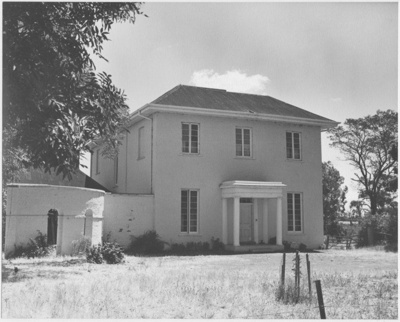
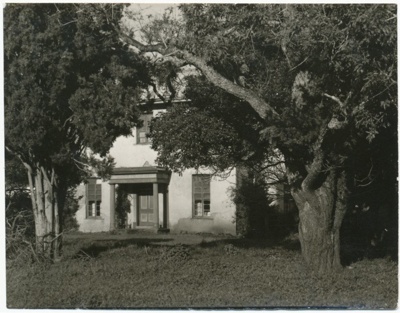

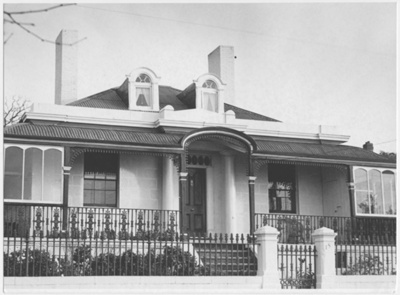
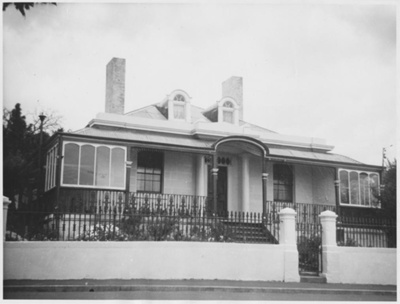




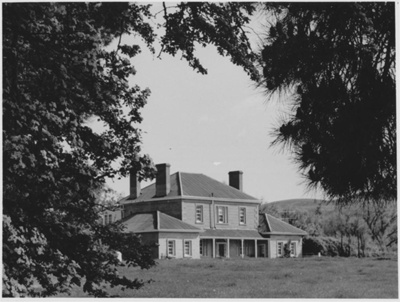
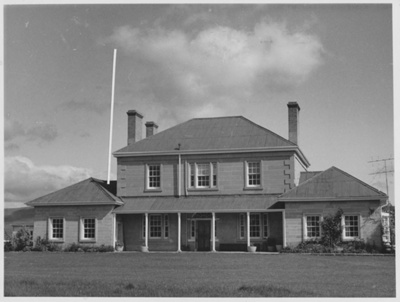

















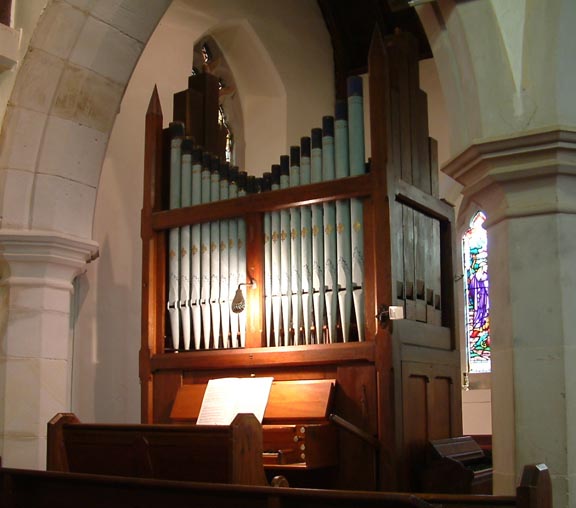















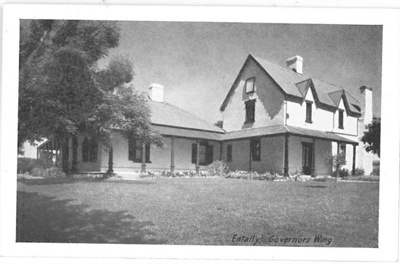


Yes i am totally agreed with this article and i just want say that this article is very nice and very informative article.I will make sure to be reading your blog more. You made a good point but I can't help but wonder, what about the other side? !!!!!!THANKS!!!!!!
ReplyDeletemeetmybnb
luxury lawn is the epitome of elegance and comfort in summer fashion. Crafted from premium quality fabric, luxury lawn suits feature intricate embroidery, designer prints, and rich textures. Ideal for festive occasions and high-end gatherings, they offer a sophisticated look while keeping you cool. This fusion of style and comfort makes luxury lawn a must-have for the modern woman.
ReplyDelete